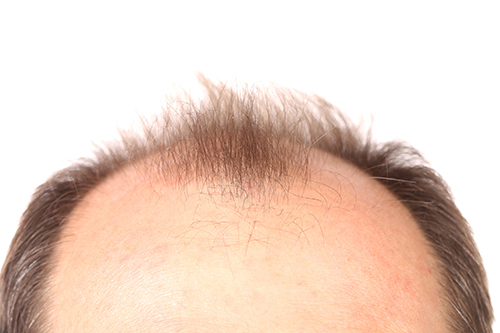
Source: indigolotos/GettyImages
The study of rare disorders is not just an esoteric endeavor embarked on by curious researchers looking to make a name for themselves. Often, research into uncommon diseases provides vital information about normal human biology or helps elucidate the underlying mechanisms of more widespread disorders. The latter scenario is exactly what investigators at the University of Pennsylvania Perelman School of Medicine found while studying an inherited disorder of the skin, hair follicles, nails, sweat glands, and teeth called hypohidrotic ectodermal dysplasia (HED)—identifying a mechanism that may also be disrupted in male pattern baldness.
Findings from the new study were published recently in Nature Communications in an article entitled “WNT10A Mutation Causes Ectodermal Dysplasia by Impairing Progenitor Cell Proliferation and KLF4-Mediated Differentiation.”
HED is most frequently caused by mutations in the EDA, EDAR, EDARRAD, and WNT10A genes. In addition to its association with HED, mutations in WNT10A are the most common genetic defect observed in people who are born missing one or more teeth but do not display other characteristics of the disease. These milder WNT10A mutations occur surprisingly frequently, in about 1% to 2% of the population. Interestingly, a variant of the WNT10A gene associated with lower levels of its protein's expression has been linked to a greater likelihood of male pattern baldness, according to a recent genome-wide association study.
“By analyzing mice with the WNT10A mutation, as well as tissues from human patients with WNT10A mutations, we found that WNT10A regulates the proliferation, but not the maintenance, of stem cells in hair follicles,” explained senior study investigator Sarah Millar, Ph.D., vice chair for basic research in the department of dermatology at UPenn. “Together with a previously published genome-wide association study, our findings suggest that lower levels of WNT10A may contribute to male pattern baldness in some individuals.”
![Hair thinning in a human patient and mouse with inherited loss-of-function mutations in WNT10A is shown. [Michael Passanante and Mingang Xu/UPenn]](https://genengnews.com/wp-content/uploads/2018/08/142647_web1881751002-1.jpg)
Hair thinning in a human patient and mouse with inherited loss-of-function mutations in WNT10A is shown. [Michael Passanante and Mingang Xu/UPenn]
The researchers constructed mouse models for WNT10A-associated HED by deleting the Wnt10a gene. The mutant mice displayed the same symptoms as HED patients with severe loss-of-function mutations in the WNT10A gene. Long-term absence of WNT10A leads to miniaturization of hair follicle structures and enlargement of the associated sebaceous glands, a phenomenon that is also observed in male pattern baldness.
We showed “that β-catenin pathway activity and adult epithelial progenitor proliferation are reduced in the absence of WNT10A, and identify Wnt-active self-renewing stem cells in affected tissues including hair follicles, sebaceous glands, taste buds, nails, and sweat ducts,” the authors wrote. “Human and mouse WNT10A mutant palmoplantar and tongue epithelia also display specific differentiation defects that are mimicked by the loss of the transcription factor KLF4. We found that β-catenin interacts directly with region-specific LEF/TCF [lymphoid enhancer factor/T-cell factor] factors, and with KLF4 in differentiating, but not proliferating, cells to promote expression of specialized keratins required for normal tissue structure and integrity.”
Interestingly, the UPenn team also discovered that cracking and scaling of palm and foot sole skin in WNT10A patients is due to decreased expression of a structural protein called keratin 9, which is specifically expressed in these regions of skin and contributes to its mechanical integrity.
“Our studies took us back and forth between human patients and our mouse model,” said Dr. Millar. “Our goal was to find what happened to cellular components affected by the WNT10A mutation to make better treatments.”
Dr. Millar and her colleagues showed that decreased proliferation and keratin 9 expression in the absence of WNT10A resulted from the failure of signaling through a well-characterized pathway that stabilizes β-catenin, allowing it to enter the cell nucleus and activate gene transcription. These findings indicate that small-molecule drugs that activate the β-catenin pathway downstream of WNT10A could potentially be used to treat hair thinning and palm and sole skin defects in WNT10A patients. These agents may also be useful for preventing hair loss in a subgroup of people with male-pattern baldness.







